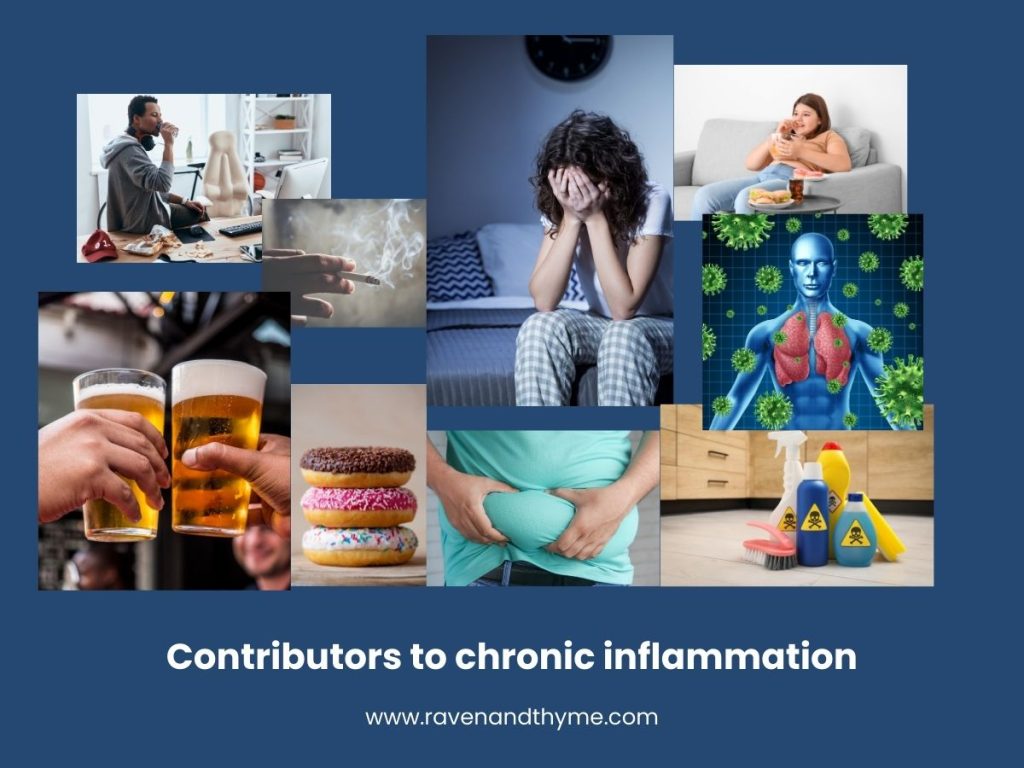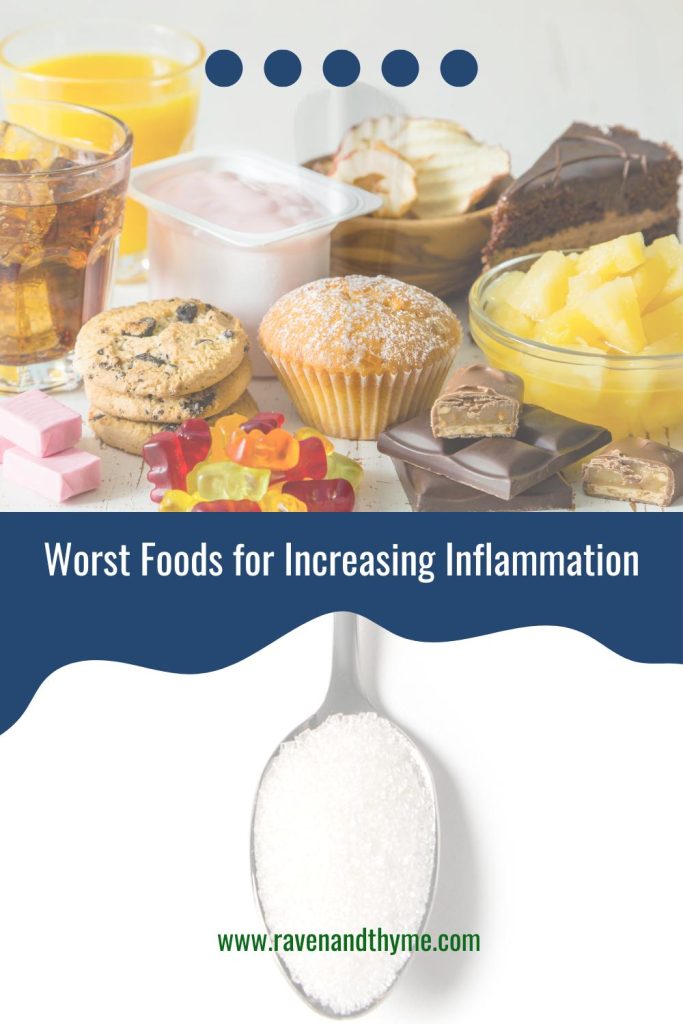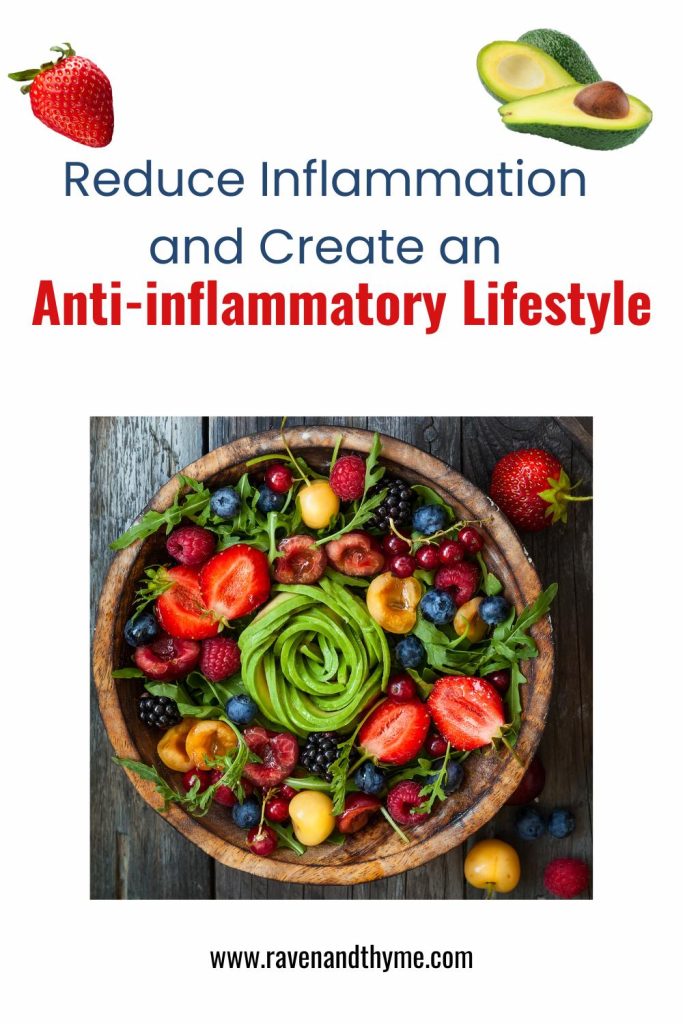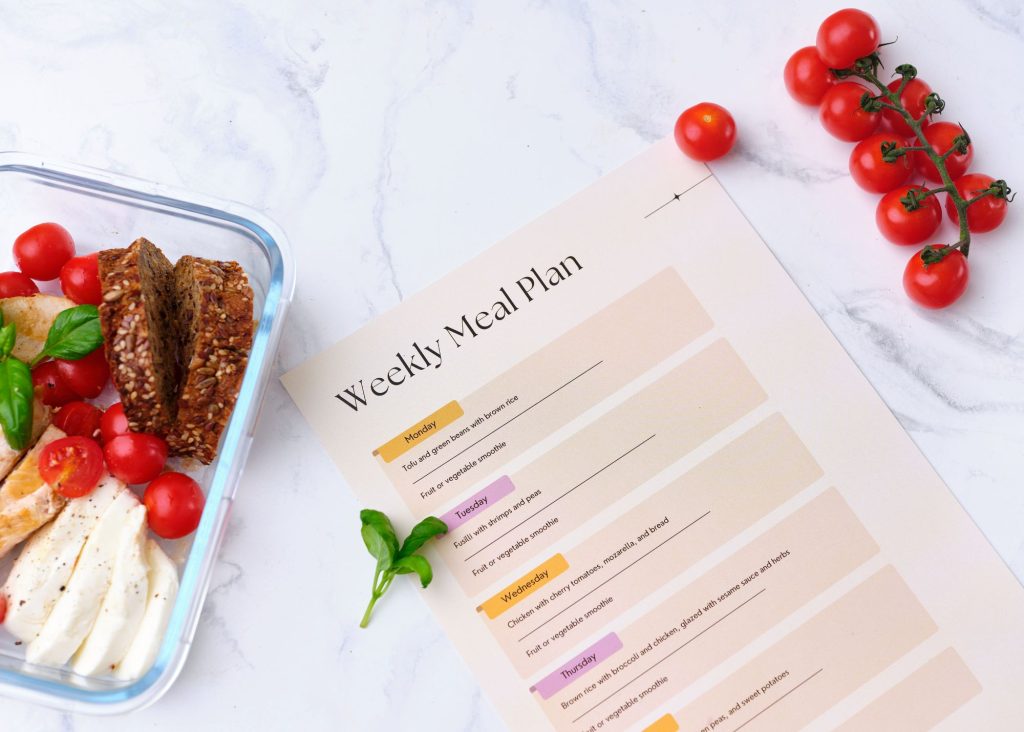How to create an anti-inflammatory lifestyle to help decrease inflammation naturally while reducing unwanted symptoms so you can get back to enjoying life.

Chronic inflammation plays a central role in some of the most challenging diseases of our time, including rheumatoid arthritis, cancer, heart disease, diabetes, asthma and even Alzheimer's. - Dr. Axe (certified doctor of natural medicine and clinical nutritionist )
What is inflammation?
Inflammation is the body’s natural defence mechanism against injury or a foreign invader. It serves to protect and help the body heal. It can also run out of control (chronic inflammation). This is where adopting an anti-inflammatory lifestyle is supportive.
What this post is about
- What is inflammation?
- What is the difference between good and bad inflammation?
- What’s the difference between an autoimmune disease and chronic inflammation?
- What are the signs of inflammation?
- What are the common causes of chronic inflammation?
- Tests to measure inflammation?
- How to reduce inflammation in the body?
- What are the worst inflammatory foods?
- What are the best anti-inflammatory foods?
- What supplements can be used to reduce inflammation?
- What are every day habits to reduce inflammation?
- What can you expect to feel when you reduce inflammation?
- What does all this mean?
What is the Difference Between Good and Bad Inflammation: Understanding Your Body’s Natural Response
Inflammation’s boss is the immune system. The immune system has a host of cells that keep the body safe and provides aid to fix things when broken. From a paper cut to cancer, the immune system is an integral part of healing.
We refer to good inflammation as acute inflammation. This is a short term response to an injury that helps the body heal and then the inflammation signal in the body is turned off.
The 5 main symptoms of inflammation in an acute injury are warmth, redness, swelling, pain and loss of function.
Think back to your last injury, minor or major and all these symptoms were probably there even for that tiny little paper cut.
The term bad inflammation is considered to be chronic inflammation. This is where the body believes that there is an ongoing attack and does not turn off the inflammatory response so the body keeps sending out invaders to fix what is no longer broken.
Or there is a foreign invader inside the body that shouldn’t be there but it doesn’t produce enough of a response until it is overwhelming the body.
Let’s see an example of what that looks like.

Remember the you were a kid and your brother or sister would barely touch you. Then they would do it again. And again. And again. And again …
It wasn’t necessarily annoying the first time, but over time it wore down your patience and became very, VERY annoying until you would blow up.
Then they would quiet down.
And start all over again.
That’s like chronic inflammation.
It annoys the immune system till it flares up and you have a symptom. Then it quiets down.
It’s not predictable so you dismiss it.
And so do doctors.
Until it starts to get predictable : (
Now, we can’t necessarily see the chronic inflammation in our body like when you have an acute injury but the same 5 symptoms are going on in your body.
For example, if you are having digestive distress, then part of your digestive tract is probably experiencing the 5 symptoms of inflammation which are then leading to the symptoms that your are experiencing such as diarrhea, bloating, constipation, cramps, cravings and more.
Inflammation also occurs as a natural part of cell activity. When cells go about their daily activities they can sometimes produce what is called a free radical. This free radical bounces around exciting everyone triggering an inflammatory response. When the body starts to produce too many free radicals that’s when we start to notice unwanted symptoms from too much inflammation.
Have heard the words oxidative stress? This is what happens when there are too many free radicals running willy nilly in the body. To oppose them, we have antioxidants that attach to them and quiet them down. Spoiler alert – we get antioxidants from food!
What's the Difference Between an Autoimmune Disease and Chronic Inflammation?
The difference is not much and a whole lot.
Basically, an autoimmune disease is a malfunction in the immune system that triggers an inflammatory response leading to a host of unwanted symptoms and damage to healthy tissue.
Chronic inflammation is an over abundance of inflammation in the body due to such things as: infection, yeast overgrowth, poor diet, poor lifestyle choices and more.
What are signs of inflammation?
There are many signs and symptoms of chronic / uncontrolled inflammation in the body. Some (but not all) are:
- fatigue
- pain
- constipation
- diarrhea
- hair thinning and loss
- digestive discomfort
- bloating
- brain fog
- migraines
- cognitive decline
- weight gain / obesity
- skin issues
- chronic diseases like: cancer, diabetes, autoimmune, heart disease and others

What are the common causes of chronic inflammation?
- not being able to handle the stress in your life
- lack of sleep
- sedentary lifestyle
- overload of toxins
- poor diet
- obesity
- menopause
- too much exercise
- smoking and vaping
- excessive alcohol use
- hidden infection
- disease
- food sensitivity or allergy
- autoimmune disease
- dysbiosis
Tests to Measure Inflammation
These are a few basic tests that can measure inflammation in the body. There are others that doctors may order for specific reasons + testing for autoimmune diseases.
- CRP (C-reactive protein)
- A1C
- Homocysteine
- Ferritin
- ESR (erthrocyte sedimentation rate)
How to Reduce Inflammation in the Body
Simply put, you want to reduce the amount of pro-inflammatory lifestyle habits and increase your anti-inflammatory habits.
So let’s look at how to do that.
What are the worst inflammatory foods?
Hint – you will want to reduce your intake of these : )
I’m sure this isn’t the first time you’ve heard this – the answer is still highly refined and processed foods, added sugars and those euphoric foods.
If the “food” / product is man made in a factory then it is highly refined and processed with unnecessary ingredients.
Reduce your intake of high sugar foods.
Surprise! Sugar has been added to almost al processed foods. If you check the label, you might be surprised to see how much sugar is in everyday products like: Heinz Classico Traditional Sweet Basil Pasta Sauce which has 8g of sugar per 1/2 cup. Or Nature Valley Sweet & Salty Roasted Mixed Nut Granola Bar which contain 9g of sugar per bar.
Sodas, candies, bars, protein drinks, electrolyte drinks, soups, condiments and most ultra-processed “foods” contain varying levels and kinds of sugar.

The well-known Frank’s Hot Sauce commercial had the great tagline of, “They put that shit on everything.” Well the sugar companies could easily take that tagline for themselves.
Note: Frank’s hot sauce does not have any sugar added.
And the holy trinity of, brain-stimulating, taste-bud-tingling, euphoric-eating foods – drum roll please – the heavenly mix of carbs, sugar, fat and salt. You otherwise know these as: donuts, cookies, cakes, pastries, breakfast cereals, sauces, ice cream, chips …
The ones that make you sing…
“I was made for lovin’ you, baby
You were made for lovin’ me
And I can’t get enough of you, baby
Can you get enough of me?”
– by Kiss
We all have been there, you crack open that bag of Ruffles (natural, I hate any flavoured chip unless it’s Doritos and I’m in a Jeep, with the roof off, in the summer, on a road trip). And I do the responsible thing and portion out the chips in a bowl (because we are told that is the healthiest way to eat chips : ) ). Then I portion out some more. And more. And I’m now starring at the last handful of chips in the bag. I leave it so I can say that I didn’t eat the whole thing : )
These processed foods are created, not by nature, but by man to make you eat the whole bag, bar, bottle so that you will buy more and the company will make more money.
I hate to say it but they do not have your health in mind when they created the product. It’s a business, they are only looking to make money for the company and the investors.
Sad for your health, but, (truth bomb) you get to choose what you put in your shopping cart.
It’s not all bad news though, this also means we have a lot we can do to start reducing inflammation in our body.
You can start implementing simple steps to reduce inflammation and create your anti-inflammatory lifestyle today.

What are the best Anti-inflammatory Food Choices?
- fatty fish like salmon, mackerel, sardines (canned or fresh)
- rainbow coloured fruits and vegetables
- quality fats like: avocado, olive oil, coconut oil
- whole grains
- removal of any foods that may be causing issues
- both quality and enough protein
- reduce ultra-processed foods
- reduce added sugars
- reduce the amount of times per day you eat refined flour products like bread and pasta
- increase your variety of foods you eat each week
- add fermented foods daily
What Supplements can be used to Reduce Inflammation?
There are many more, but this list is a great place to start. Note: supplements are best used along with an anti-inflammatory lifestyle.
A side effect of inflammation is pain. Curcumin has also been recognized with having the ability to reduce pain in some people so you can get a double whammy from that supplement.
- curcumin
- L-glutamine
- omega-3 fatty acids
- vitamin D
- a greens drink with added fruits (watch the sugar content) can also be a great addition for those who are switching to a whole foods eating style or when travelling)
- probiotics
- quercetin
- magnesium
What are Every Day Habits that Reduce Inflammation?
- incorporate ways to reduce stress such as meditation, journalling. playing, dancing, decreasing time on your device, hanging out with friends…
- movement (any kind just keep moving)
- prioritize sleep
- reduce excess weight
- remove household toxins
- get in touch with you, your joy, your confidence, your best self
- put your keys back in the same place every time you come in the door
- lift something heavy – challenge your muscles
- reduce your time sitting

What can you Expect to Feel When you Reduce Inflammation?
A reduction in unwanted symptoms for starters.
The real advantage of incorporating anti-inflammatory changes in your life is to be able to do whatever you want.
The reason most people strive for better health and wellness is so you can live your best life.
Whether you want your health to spend lots of time with your children, grand or great-grand children.
Or, so that you can build your company, spend time with loved ones, travel the world, become an artist or dance in the arms of your special person for decades to come; whatever reason you have to live a long and full life, that is what you will feel when you reduce inflammation.
You reduce unwanted symptoms and decrease the chance of disease. You get to live!
What Does this all Mean?
Chronic inflammation is a root trigger for painful and unwanted symptoms in the body.
Symptoms that reduce your ability to enjoy life. You have control over how much inflammation in your body through everyday choices in food and lifestyle.
There are many anti-inflammatory strategies and foods to help decrease inflammation and reduce unwanted symptoms so you can get back to enjoying life.
You have the ability to take small daily steps to create a life you love. Once you feel what it’s like to live without inflammatory symptoms, you won’t want to go back.
1. Inflammation is a natural part of your body functions.
2. Too much inflammation over a long period of time may lead to negative symptoms and disease.
3. You have the ability to reduce the amount of inflammation in your body.
4. Choose one of the above “habits to reduce inflammation” and start making changes today.
5. Consistency over perfection.
You got this!

If you are looking to skip the trial and error or have been trying all the things but still not seeing results, contact me and let’s discuss the best plan for you to achieve the results you desire.
References
https://pubmed.ncbi.nlm.nih.gov/27677370/
https://pubmed.ncbi.nlm.nih.gov/15834840/#:~:text=Oxytocin
https://www.researchgate.net/publication/301255563_Oxidative_Stress_and_Obesity
https://pmc.ncbi.nlm.nih.gov/articles/PMC1074343/#:~:text=Based on visual observation, the,of function (functio laesa).
https://www.kraftheinz.com/classico/products/00041129077900-traditional-sweet-basil-pasta-sauce
https://www.naturevalley.ca/products/roasted-mixed-nut-sweet-and-salty-granola-bars



